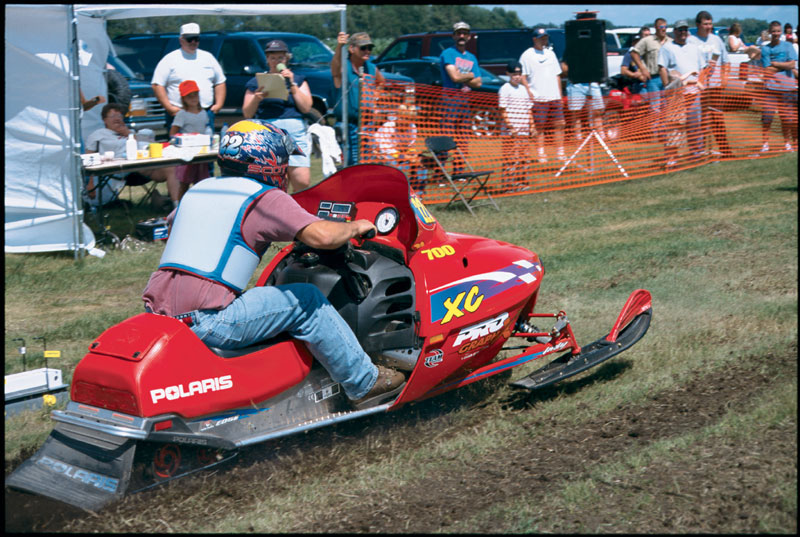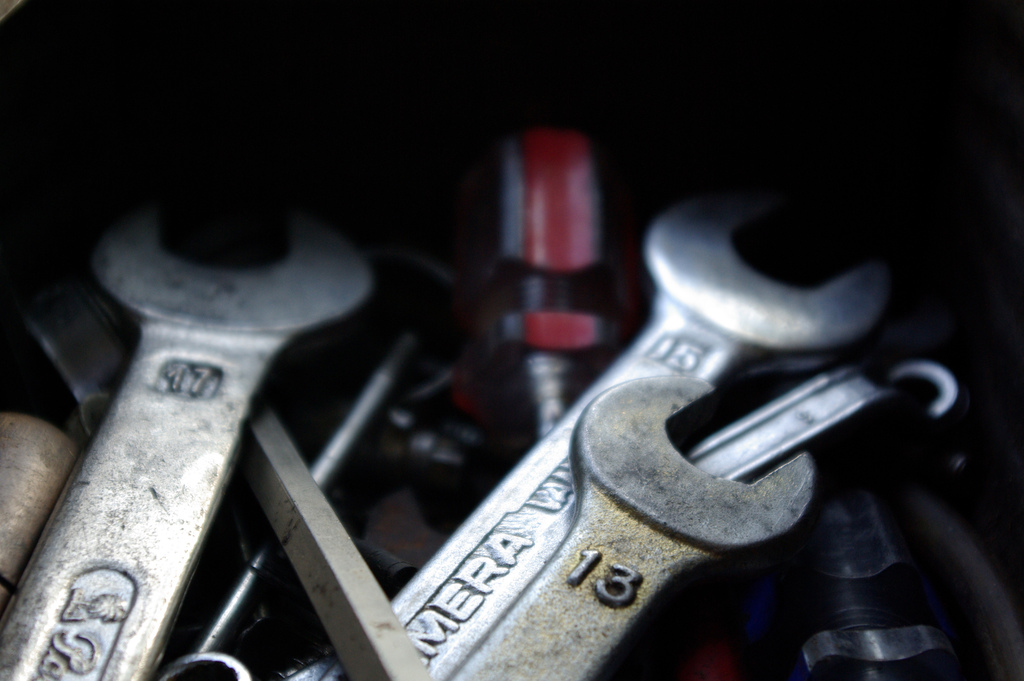Snow Goer Magazine Snowmobile Repair Clinic
 Phazer Quits Running
Phazer Quits Running
Q: I have a 2007 Phazer FX that has two problems: the temperature light comes on occasionally, and, for no apparent reason, the machine occasionally will die when I come up to a stop sign on the trail. I called my dealer and he said to just turn up the idle [and] check the clutch and see if it is dragging. There is no dragging and it seems to idle just fine. It starts right back up and idles fine until the next stop sign. Have you heard of anyone else having this problem? The sled has 1,200 miles and no modifications. Any input would be appreciated.
Scott Johnson
Virginia, Minnesota
A: An optional electric radiator fan can be installed on 2007 Phazers to help increase cooling performance in marginal snow conditions. The fan mounts to the stock radiator and plugs directly into the wiring harness on Phazer FX and GT models; standard Phazers require installation of a special wiring harness. Check with a dealer to see if Yamaha will cover the cost of this upgrade. To track down cause for the engine stalling, first make sure belt deflection is set correctly. As the drive belt warms up, it expands and closes the gap between itself and the clutch sheaves. This loads the engine and, in extreme cases, can pull down the rpm so far that it causes the engine to die. The belt will squeal and rub on the primary clutch’s sheaves and cause the machine to creep, and there will be a lot of belt residue on the sheaves. If belt deflection is OK and the engine still dies, look for carbon buildup on the throttle bodies. It’s normal for a little fuel to blow back into an engine’s throttle bodies, but over time this can collect and harden, especially where the throttle body’s butterfly valve sits. The buildup affects airflow, resulting in a lean-air/rich-fuel ratio; some engines are more sensitive to buildup than others. Remove the airbox and look at the throttle bodies. If you see a brownish/yellowish coating, remove the body and clean the components with carburetor cleaner. To help prevent this problem, use Yamaha Ring Free fuel additive, Polaris Carbon Clean or similar product. Other things to check are throttle body synchronization and the throttle position sensor setting (TPS). A mechanic who knows the correct procedures and specifications should inspect these. Keep in mind that with the carbon buildup problem described earlier, a TPS will test OK, but the buildup will cause a rich condition and, therein, the stalling problem.
Bogging Formula III
Q: I have a 1997 Ski-Doo Formula III. It runs great [and I’ve] had no problems with it whatsoever. But when I get into some really powdery snow, it likes to bog down and it acts like it’s running out of fuel. It runs out of power and I have to dog it back to the shop. Once I let it sit in a heated shop for a while it runs good and is full of power. I have tried putting some tape around where air enters the hood to keep snowdust out, but that doesn’t seem to help. Is there anything else I can do to fix this problem?
Kevin Mills
Independence, Iowa
A: The spark plugs will indicate whether fuel delivery is correct and help pinpoint the problem. If one plug is consistently lean, that carburetor might be freezing up, likely caused by snow ingestion. A frozen carburetor will make the engine bog because fuel can’t flow through the tiny passages and jets. But after the sled sits in a warm shop, the ice melts and the problem is solved, temporarily. You’re on the right track by finding where this snow could be getting into the air box. Taping off vents is a good start. Make sure the airbox is installed correctly all the way around the carburetor and check the foam inside the airbox to confirm that it’s still in tact. Foam can deteriorate over time or it might have been removed by a previous owner. Several aftermarket companies sell pre-filters for air intakes that are usually sold for mountain riding applications, but it might be a good addition to your sled.
Track Lug Height
Q: I just bought a 2007 Polaris 600 IQ with the stock 1-inch track. I would like to increase the track lug height, but I am not sure what height would be the best for me. I spend most of my time trail riding in Minnesota and Wisconsin. I have a buddy who wants to sell me a 1.75-inch track for it. Would that be OK? I just want to improve traction. Also, my buddy and I disagree how truck lug height should be measured.
Ryan Gostof
Ham Lake, Minnesota
A: Track lug height is a personal preference based on your own needs. For example, a 1-inch track will yield more top-end speed than a 1.25-inch track by about 5 mph. While tall lugs provide more loose-snow traction, they’re more susceptible to damage on hard-packed trails. A track with 1.75-inch lugs is too aggressive for trails in Minnesota and Wisconsin as a spinning deep-lug track does more damage to groomed trails because it displaces more snow than a short-lug track. Studs are a good accessory to install for increasing traction and control on trails. We generally run 120 to 144 studs in our 600-class sleds, which generally have 1- or 1.25-inch lugs, and it is a good balance of traction and durability for trail riding. Keep in mind that studs can tear up trailer beds and garage floors, so be careful there and when driving across parking lots, gas stations and driveways so you don’t damage those properties. The correct way to measure lug height, according to Camoplast Sales and Marketing Manager Bruce Dashnaw, is to measure from the top of the track carcass — the point where the lug attaches to the track belting — to the longest portion of the lug.





